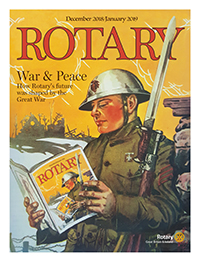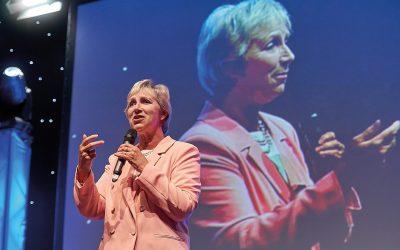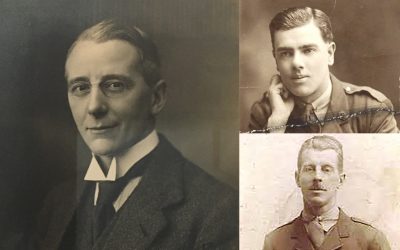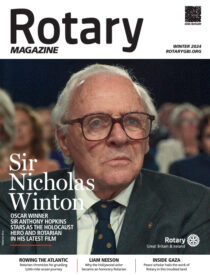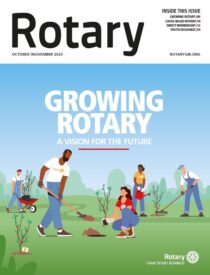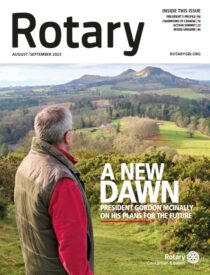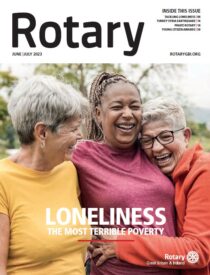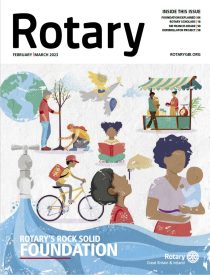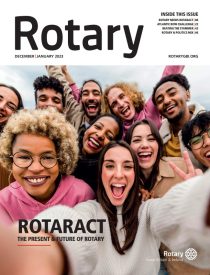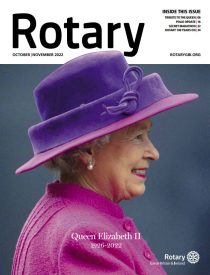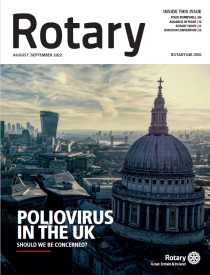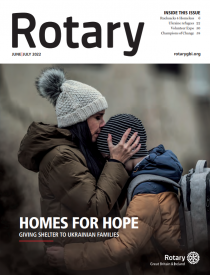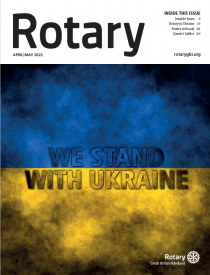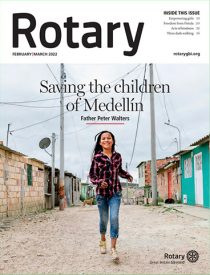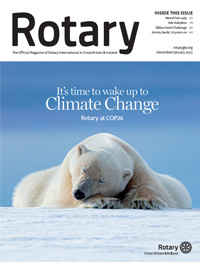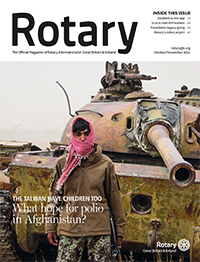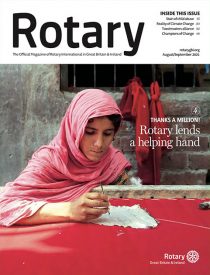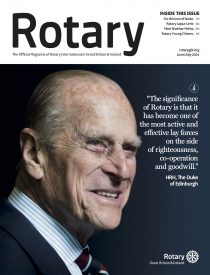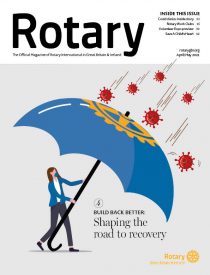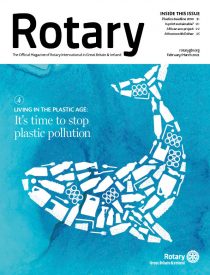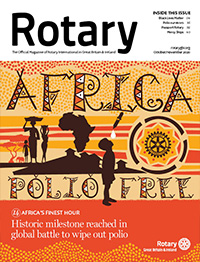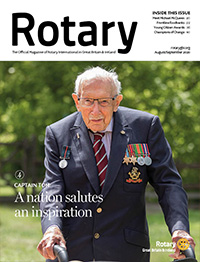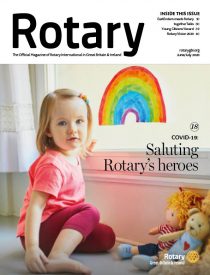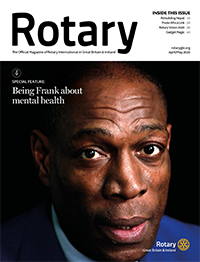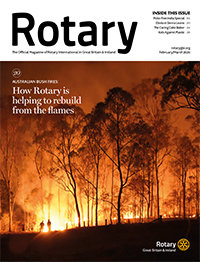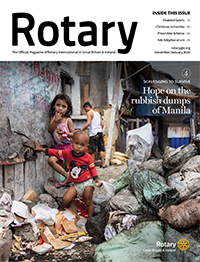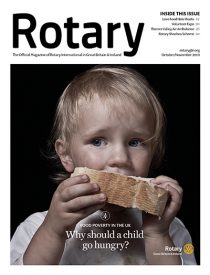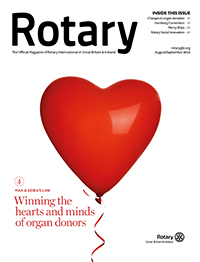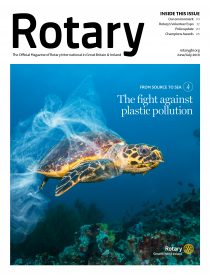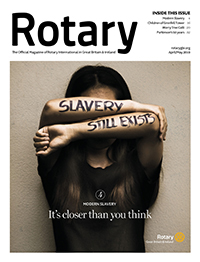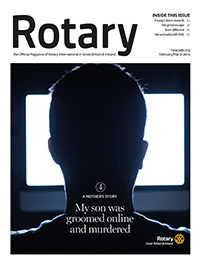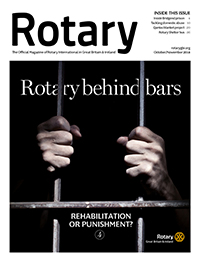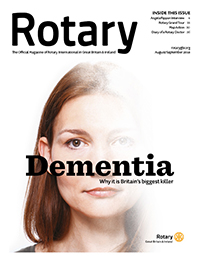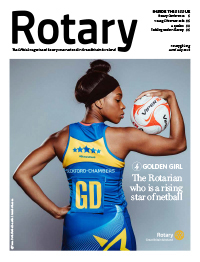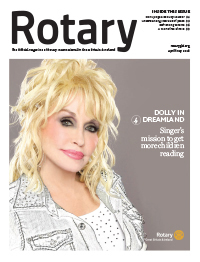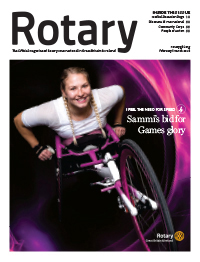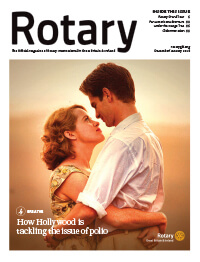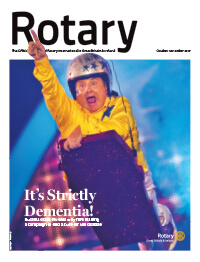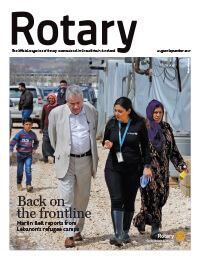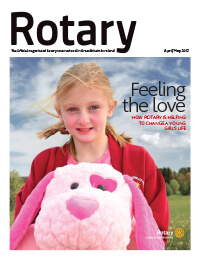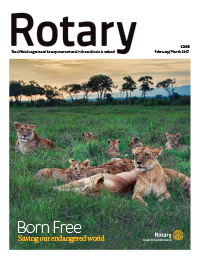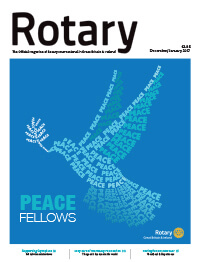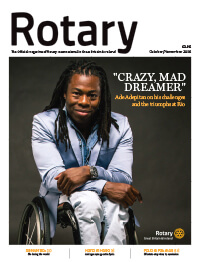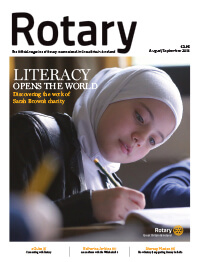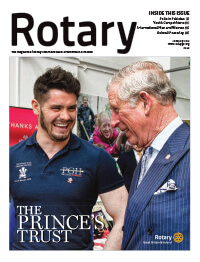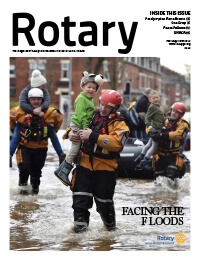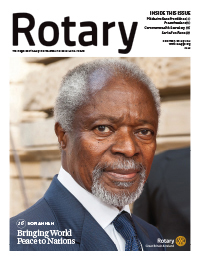As you take the half hour train ride from downtown Chicago to the station at 111th Street/Morgan Park, there’s a sense that you are walking in the footsteps of Paul Harris.
A century ago, it was this commute which the founder of Rotary made daily from his law practice in the city to the family home in the district of Beverly, on the south shore.
From the 1900s to World War Two, this leafy suburb with its wide boulevards was where Chicago’s well-heeled lived.
The tidy home, built on a steep bank in 1905 – the year Rotary was founded – was named ‘Comely Bank’, after the street and neighbourhood in Edinburgh where Paul Harris’s wife, Jean, grew up.
And it was here where Rotary took root. Those early meetings took place at Comely Bank in a low-ceilinged basement as the organisation grew from the Rotary Club of Chicago to become a global entity.
Coincidentally, the first President of Rotary, Silvester Schiele, lived right behind the Harris’s, so there was a well-worn path between the yards as the two men and the Board of Directors chartered a future course of Rotary.
Comely Bank also hosted heads of state, captains of industry, and Rotary members from around the world.
The Harris’s lived in this suburban setting for 35 years, from 1912 until 1947, when Paul Harris died in the home following a brief illness.
Fast forward to today, and Comely Bank is part of a major renovation project under the umbrella of the Paul and Jean Harris Foundation, to restore the legacy and so preserve the history of Rotary.
$2 million is being directed towards an endowment, which will pay for the expenses of this home in perpetuity, with the rest of the money allocated to building costs.”
Robert Knuepfer is the leading light behind the $5 million initiative.
He was the centennial president of the Rotary Chicago, the founding club of the movement, when the project was kick-started in 2005.
“After Paul Harris’s death, Jean Harris stayed for a year before she put the home up for sale and returned to Edinburgh to live with her brother, a Presbyterian minister,” explained Robert.
“In 2005, which coincided with the 100th anniversary of Rotary, we got a call from the home’s owner, who was a Rotarian, to say that he was putting the house up for sale, would we like to make him an offer?
“So weeks before the Chicago convention, we bought the home for $550,000, thanks to a $500,000 loan which is owned by the Rotary Club of Chicago and $50,000 from volunteers, who have an interest in Rotary history.”
The renovation project has spluttered in fits and starts since 2005, but over the past 18 months it has gathered pace with the hope that next year the home will receive its first visitors.
Keith Larson from the Rotary Hinsdale, Illinois, is the project architect.
“It has been challenging to make sure what we do is authentic by using photographs as a reference point, but doing so using current building codes and in conjunction with the local historical preservation society,” he said.
“Fortunately, we were able to buy the house next door 18 months ago, which has made access much easier to the property, and which will enable us to use part of the land as a car park.”
As Robert and Keith take you around the tight, steep-staired, three-floored property, both men cannot hide their passion for a project which has been a long time in the making.
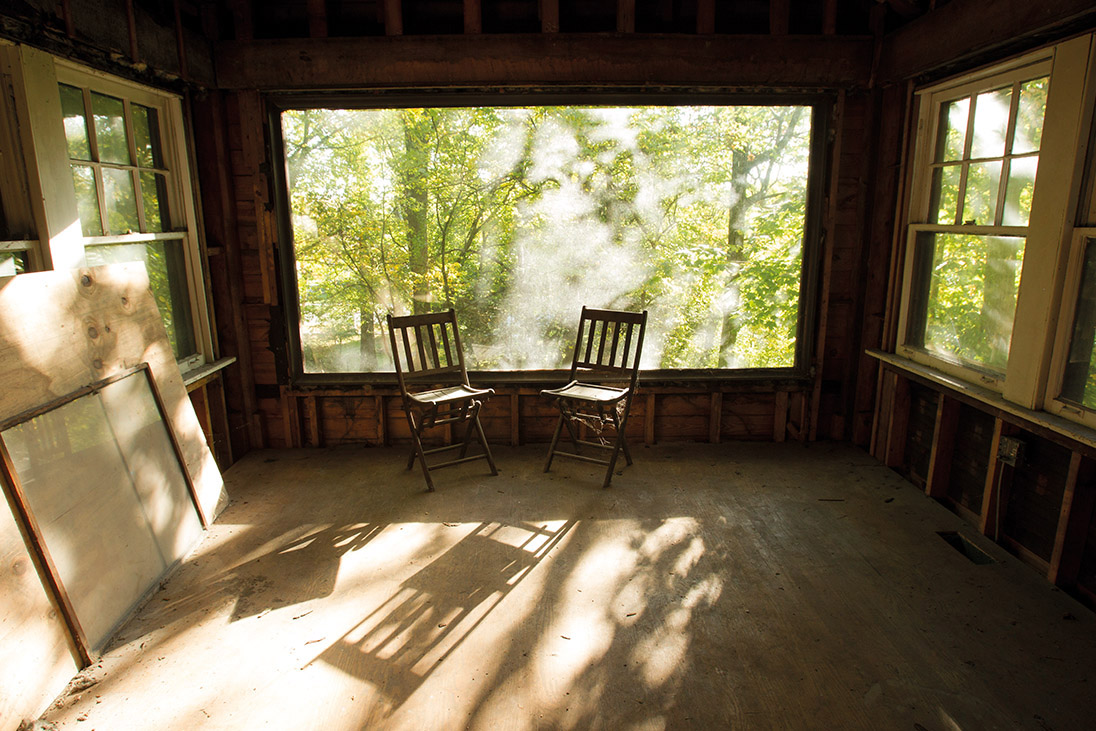

Rotary founder Paul Harris and his wife, Jean, lived in the home from 1912 to 1947.
“In American terms, this is Mount Vernon, the home of George Washington,” added Robert.
“For Rotarians, this is where it all began.”
Besides renovating the interior and recreating a peace garden out front, there are also plans to establish a Rotary Room which can host club events and meetings, as well as a theatre seating 40 people showing films of Rotary’s history and Paul Harris.
Disabled access will also be provided by elevator.
“We have been in fits and starts ever since, but we are on the last lap,” said Robert.
“We have a commitment from Rotary International to extend us some more credit and we hope to finish the house this calendar year.”
The total fundraising goal is $5 million. The Foundation needs to repay loans to the Rotary Chicago and another to Rotary International which totals $1 million.
A further $1.5 million has been spent on renovation, including $410,000 for the next door property.
A further $2 million is being directed towards an endowment, which will pay for the expenses of this home in perpetuity, with the rest of the money allocated to building costs.
Rotary members from around the world have already embraced the project which Robert hopes will continue with naming opportunities for rooms, to $1,000 named bricks being sold, as they look to find a final $3 million.
With Paul Harris’s grave nearby at Mount Hope Cemetery, well-tended by volunteers and marking his contribution to Rotary, it is hoped that Comely Bank will become part of a Rotary heritage trail.
So what would Paul Harris think of the restoration project?
Robert Knuepfer suspects he would feel awkward. “I think his modesty would have embarrassed Paul Harris, making him believe that we were over the top in terms of honouring him,” he said.








